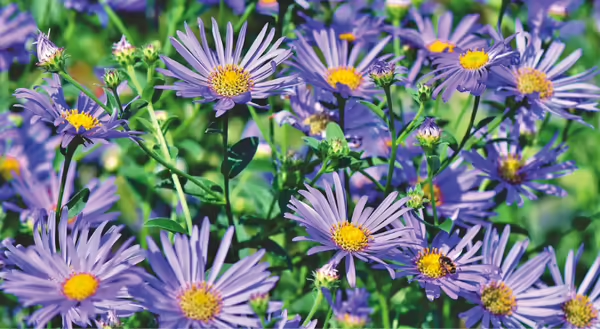
When thinking of fall bloomers for your garden, everyone's usual go-to is the mum, but don’t rule out the gorgeous asters sitting next to the mums. There are 180 species of aster, many of which are native to Illinois. New England aster (Symphyotrichum novae-angliae) and aromatic aster (Symphyotrichum oblongifolium) are two easy-to-find favorites.
Asters grow best in full sun to partial shade areas with well-drained soils. They are perennials in the garden but need atleast six weeks in the ground before it freezes to develop a good root system. Varieties can vary in height from six inches to six feet. Taller varieties should be pruned back by 1/3 several times throughout the summer (stopping in late July) to create a more compact plant. This will also increase the number of blooms on the plant.
Typically late-summer to early-fall bloomers when days begin to get shorter. As short-day plants, like mums, meaning they need long periods of darkness. They have daisy-like flowers and range in color from purple, white, pink, and red, all with bright yellow centers. It is normal for the lower leaves to turn brown and dry up when the plant is in full bloom.
To prevent asters from self-seeding in your garden, cut back the plant to about two inches above ground-level after the first hard frost has browned the foliage. You can also leave the plant and developing seeds for winter interest and for the birds to enjoy. Divide plants every two to three years (or when the center dies out) in early spring. Some are prone to powdery mildew, which can be reduced with good air circulation and watering in the morning at the base of the plant.
A bee and butterfly favorite, they are a great source of fall nectar for pollinators that are traveling on their fall migration. While most flowers have already finished blooming, asters are just starting their show in the garden. They also serve as the larval host plant for several butterflies and moths.
Asters make great cut flowers for mixed fall arrangements. Arrange them with bright yellow goldenrod and ornamental grasses for a stunning display amongst your autumnal décor. They are also the birth flower for September (Happy 60th Birthday, Mom!). This fall when you head to the garden center to get some plants for fall color, throw an aster in your cart to try out this year too!